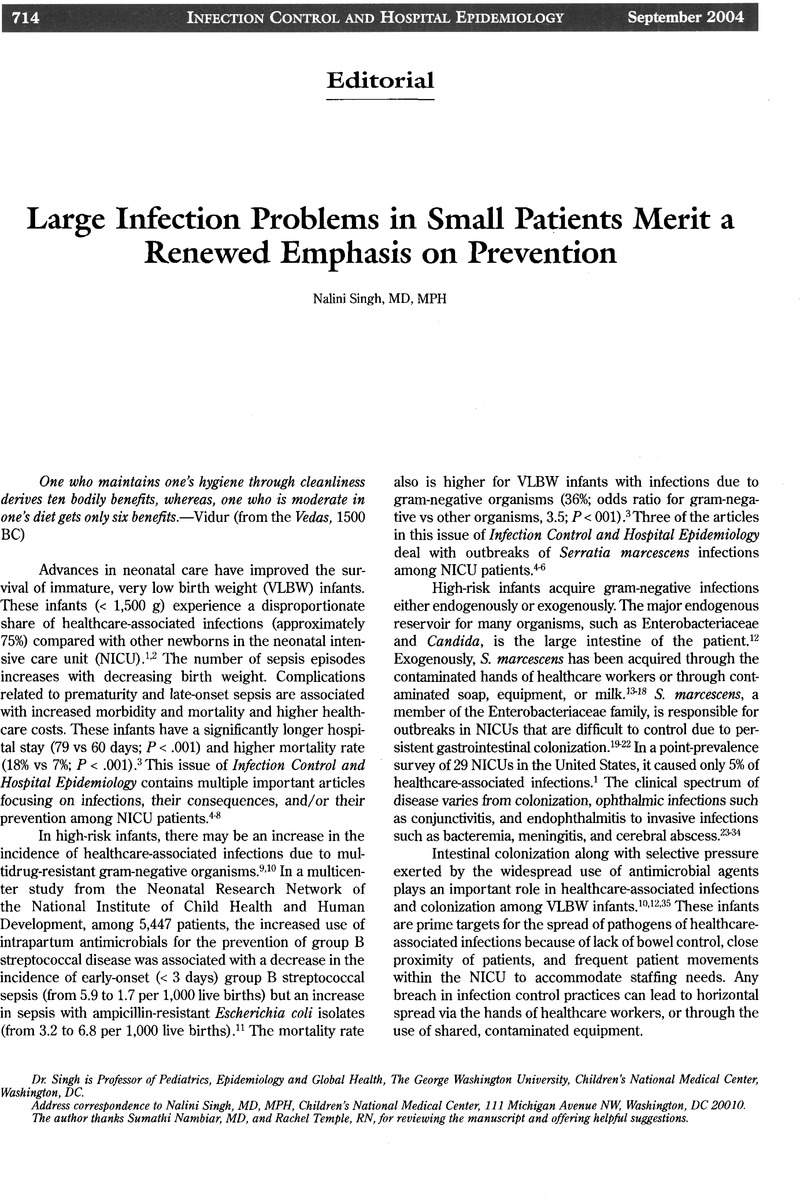Crossref Citations
This article has been cited by the following publications. This list is generated based on data provided by Crossref.
Bates, C.J.
and
Pearse, R.
2005.
Use of hydrogen peroxide vapour for environmental control during a Serratia outbreak in a neonatal intensive care unit.
Journal of Hospital Infection,
Vol. 61,
Issue. 4,
p.
364.
Brady, Michael T.
2005.
Health care–associated infections in the neonatal intensive care unit.
American Journal of Infection Control,
Vol. 33,
Issue. 5,
p.
268.
Couto, Renato C.
Pedrosa, Tania M. G.
Tofani, Cristina de Paula
and
Pedroso, Enio R. P.
2006.
Risk Factors for Nosocomial Infection in a Neonatal Intensive Care Unit.
Infection Control & Hospital Epidemiology,
Vol. 27,
Issue. 6,
p.
571.
Su, Bai-Horng
Hsieh, Hsin-Yang
Chiu, Hsiao-Yu
Lin, Hsiao-Chuan
and
Lin, Hung-Chih
2007.
Nosocomial infection in a neonatal intensive care unit: A prospective study in Taiwan.
American Journal of Infection Control,
Vol. 35,
Issue. 3,
p.
190.
Mammina, Caterina
Di Carlo, Paola
Cipolla, Domenico
Giuffrè, Mario
Casuccio, Alessandra
Di Gaetano, Vincenzo
Plano, Maria Rosa Anna
D'Angelo, Emma
Titone, Lucina
and
Corsello, Giovanni
2007.
Surveillance of multidrug-resistant gram-negative bacilli in a neonatal intensive care unit: prominent role of cross transmission.
American Journal of Infection Control,
Vol. 35,
Issue. 4,
p.
222.
2007.
Empfehlung zur Prävention nosokomialer Infektionen bei neonatologischen Intensivpflegepatienten mit einem Geburtsgewicht unter 1500 g.
Bundesgesundheitsblatt - Gesundheitsforschung - Gesundheitsschutz,
Vol. 50,
Issue. 10,
p.
1265.
Rahim, Raijah Hj A
and
Barnett, Tony
2009.
Reducing nosocomial infection in neonatal intensive care: An intervention study.
International Journal of Nursing Practice,
Vol. 15,
Issue. 6,
p.
580.
Korhonen, Anne
2010.
A Multicentred Clinical Improvement Project Among Preterm Population Evaluation of Current Practices.
Journal of Perinatal & Neonatal Nursing,
Vol. 24,
Issue. 4,
p.
341.
Gray, Jennifer
Arvelo, Wences
McCracken, John
Lopez, Beatriz
Lessa, Fernanda C.
Kitchel, Brandon
Wong, Betty
Reyes, Lissette
and
Lindblade, Kim
2012.
An outbreak of Klebsiella pneumoniae late-onset sepsis in a neonatal intensive care unit in Guatemala.
American Journal of Infection Control,
Vol. 40,
Issue. 6,
p.
516.
Gadallah, Mohsen Abdel Hamid
Aboul Fotouh, Aisha Mohamed
Habil, Ihab Shehad
Imam, Safaa Shafik
and
Wassef, Ghada
2014.
Surveillance of health care–associated infections in a tertiary hospital neonatal intensive care unit in Egypt: 1-year follow-up.
American Journal of Infection Control,
Vol. 42,
Issue. 11,
p.
1207.



